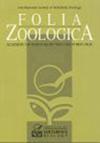Directional orientation of pheasant chicks at the drinking dish and its potential for research on avian magnetoreception
Q2 Agricultural and Biological Sciences
引用次数: 5
Abstract
Abstract. Magnetoreception has been widely studied in birds mainly through the paradigm of homing or seasonally appropriate migratory direction. It was found that in total darkness or under selected light regimes (differing in colour and/or intensities), migratory birds display orientation towards certain “fixed” directions which do not correspond to the migratory or homing direction. This “fixed orientation” might correspond to the so-called magnetic alignment recorded in animals of different non-avian taxa. Here we demonstrate that also “common”, non-migratory birds, pheasants, adopt a preferred position and body orientation when drinking at a circular dish. We recorded these parameters by means of camera traps in a pheasantry under control conditions and under experimental exposure to bright blue light. We identified three types of orientation at the edge of drinking dish: standing radially or tangentially with left or right eye to the dish. The position of tangentially drinking chicks was significantly non-random. While the position of radially drinking chicks was random under control conditions, it became significantly non-random, concentrated at about the north and south pole of the dish, under bright blue light. Our results show that this alignment has some similarities with the “fixed orientation”. We suggest that the preference towards a “fixed” direction serves to calibration, organization and reading of the mental (cognitive) map of the space and as a direction indicator. We discuss heuristic potential of the presented research (experimental and evaluation) design for further study on magnetoreception.鸡在饮水盘上的定向取向及其在鸟类磁接受研究中的潜力
摘要鸟类的磁感受已被广泛研究,主要通过归巢或季节性适当的迁徙方向的范式。研究发现,在完全黑暗或在选定的光线(颜色和/或强度不同)下,候鸟向某些“固定”方向显示方向,而这些方向与迁徙或归航方向不对应。这种“固定取向”可能对应于在不同的非鸟类分类群中记录的所谓的磁排列。在这里,我们证明了同样“常见”的非候鸟——野鸡——在圆形盘子旁饮水时,也会采取一种偏好的姿势和身体方向。在控制条件下和实验条件下,在明亮的蓝光照射下,我们通过相机陷阱记录了这些参数。我们确定了饮水盘边缘的三种方向:放射状或切向站立,左眼或右眼注视着盘子。切向饮水雏鸡的位置具有显著的非随机性。在控制条件下,径向饮水雏鸡的位置是随机的,而在明亮的蓝光下,它变得明显非随机,集中在盘子的南北两极左右。我们的结果表明,这种排列与“固定取向”有一定的相似之处。我们认为,对“固定”方向的偏好有助于校准、组织和阅读空间的心理(认知)地图,并作为方向指示器。我们讨论了本研究(实验和评估)设计对进一步研究磁感受的启发潜力。
本文章由计算机程序翻译,如有差异,请以英文原文为准。
求助全文
约1分钟内获得全文
求助全文
来源期刊

Folia Zoologica
生物-动物学
CiteScore
1.70
自引率
0.00%
发文量
0
审稿时长
3 months
期刊介绍:
Information not localized
 求助内容:
求助内容: 应助结果提醒方式:
应助结果提醒方式:


